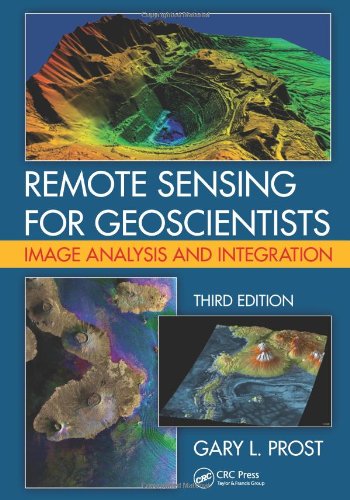

Most ebook files are in PDF format, so you can easily read them using various software such as Foxit Reader or directly on the Google Chrome browser.
Some ebook files are released by publishers in other formats such as .awz, .mobi, .epub, .fb2, etc. You may need to install specific software to read these formats on mobile/PC, such as Calibre.
Please read the tutorial at this link: https://ebookbell.com/faq
We offer FREE conversion to the popular formats you request; however, this may take some time. Therefore, right after payment, please email us, and we will try to provide the service as quickly as possible.
For some exceptional file formats or broken links (if any), please refrain from opening any disputes. Instead, email us first, and we will try to assist within a maximum of 6 hours.
EbookBell Team

5.0
68 reviewsThis third edition of the bestselling Remote Sensing for Geologists: A Guide to Image Interpretation is now titled Remote Sensing for Geoscientists: Image Analysis and Integration. The title change reflects that this edition applies to a broad spectrum of geosciences, not just geology; stresses that remote sensing has become more than photointerpretation; and emphasizes integration of multiple remote sensing technologies to solve Earth science problems. The text reviews systems and applications, explains what to look for when analyzing imagery, and provides abundant case histories to illustrate the integration and application of these tools.
See What’s New in the Second Edition:
The book covers how to initiate a project, including determining the objective, choosingthe right tools, and selecting imagery. It describes techniques used in geologic mapping and mineral and hydrocarbon exploration, image analysis used in mine development and petroleum exploitation, site evaluation, groundwaterdevelopment, surface water monitoring, geothermal resource exploitation, and logistics. It also demonstrates how imageryis used to establish environmental baselines; monitor land, air, and water quality; maphazards; and determine the effects of global warming.
The many examples of geologic mapping on other planets and the moon highlight how to analyze planetary surface processes, map stratigraphy, and locate resources. The book then examines remote sensing and the public, geographic information systems and Google Earth, and how imagery is used by the media, in the legal system, in public relations, and by individuals.
Readers should come away with a good understanding of what is involved in image analysis and interpretation and should be ableto recognize and identify geologic features of interest. Having read this book, they should be able to effectively use imagery in petroleum, mining, groundwater, surface water, engineering, and environmental projects.